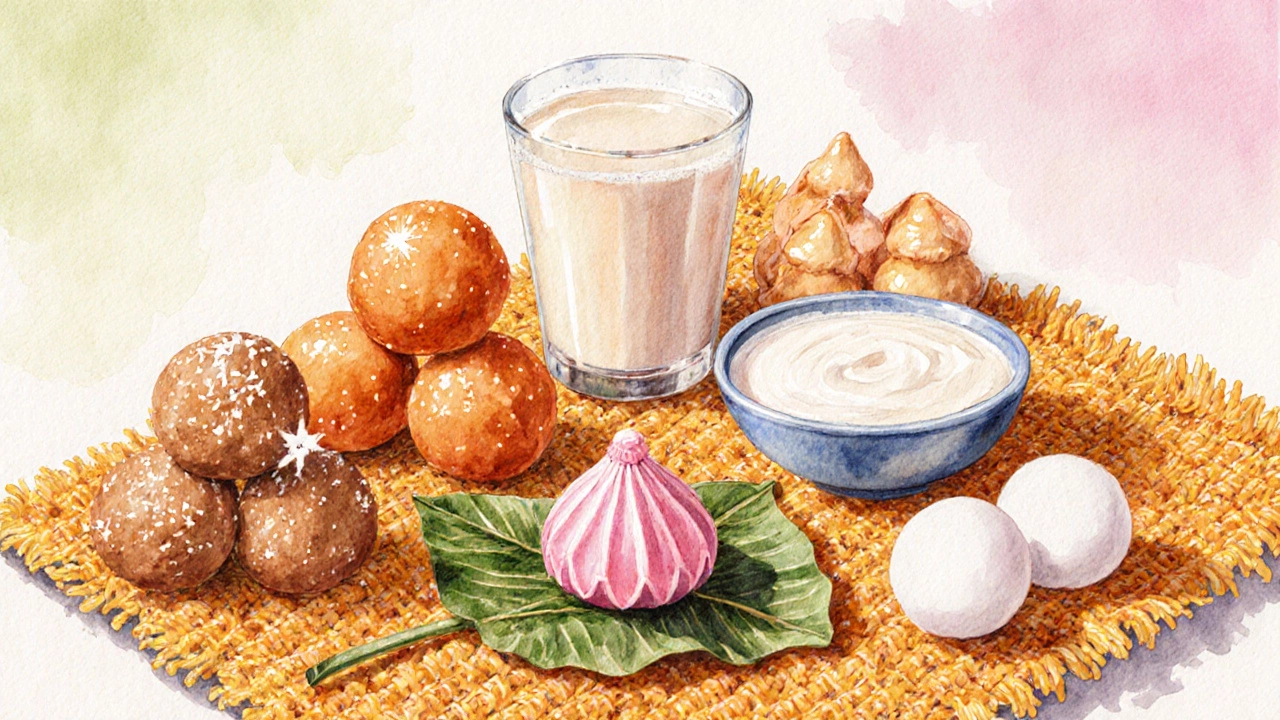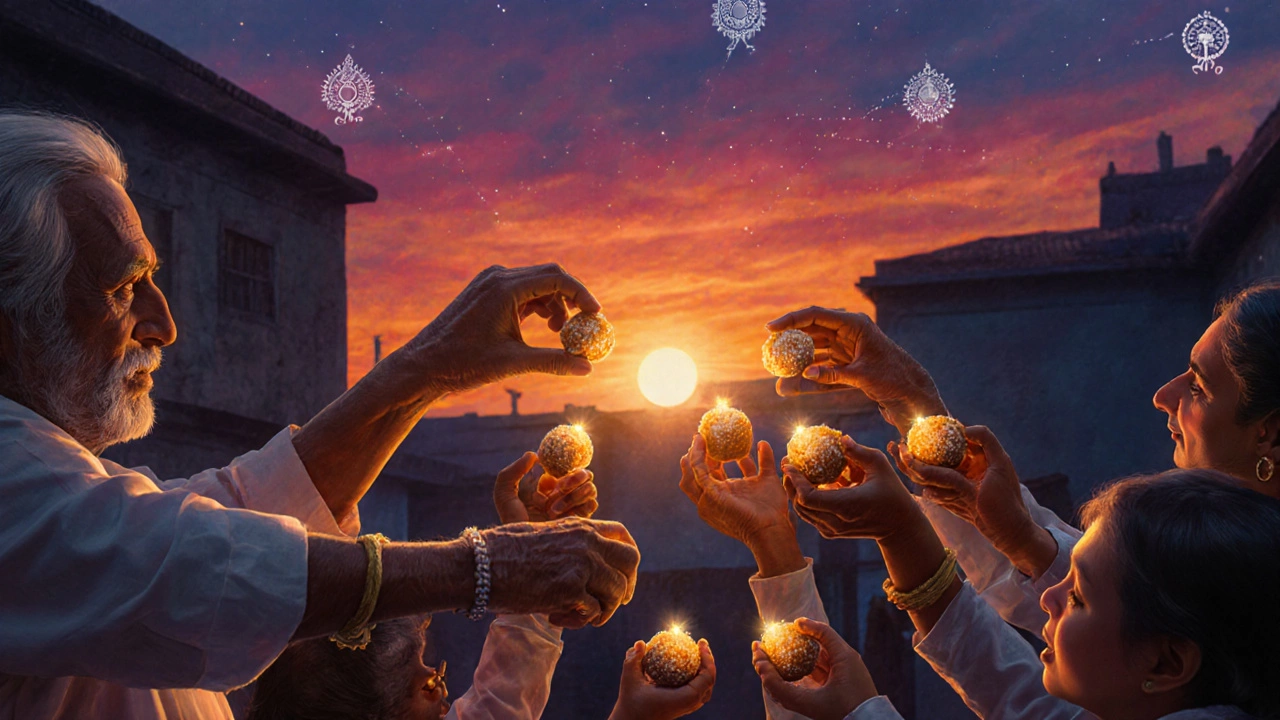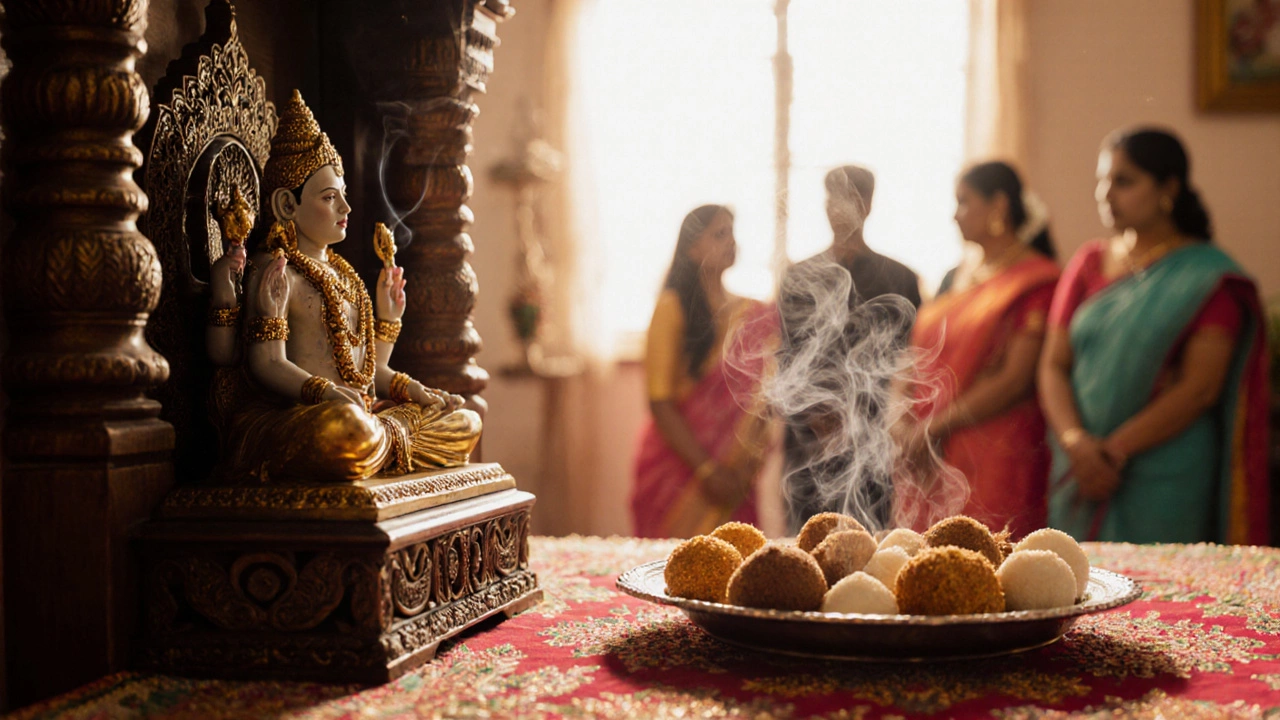12 Oct 2025
- 0 Comments
Ever wondered why a bowl of sweet treats shows up at every Hindu celebration? It’s not just about tasty food-sweets carry deep cultural, spiritual, and social messages. In this article we’ll unpack the reasons behind the tradition, walk through the main festivals where sweets dominate, and give you practical tips if you ever need to join a Hindu gathering.
Key Takeaways
- Sweets act as prasad, a blessed offering shared with everyone after a ritual.
- Different festivals favor specific sweets that symbolize prosperity, purity, or mythic events.
- Giving sweets strengthens community bonds and signals goodwill.
- Understanding the symbolism helps you respect the customs and choose appropriate sweets.
- When in doubt, classic sweets like ladoos or barfis are safe choices.
What Are Hindu sweets?
In Hindu culture the word “mithai” (pronouncedmee‑thai) refers to any sweet confection made from sugar, milk, nuts, or grains. These aren’t just desserts; they’re considered a medium for offering gratitude to the divine and sharing blessings with the community.
The Role of prasad in Rituals
After a worship ceremony (puja), the cooked offering is set aside as prasad. The belief is that the deity has sanctified the food, turning it into a conduit of divine energy. Distributing prasad among participants reinforces the idea that everyone shares the same spiritual favor.
Why Sweetness Matters
The taste of sugar is universally associated with pleasure and positivity. In Vedic scriptures, sweetness symbolizes knowledge that is “soft, pleasant and uplifting.” Offering sweets, therefore, conveys a wish for the recipient’s life to be accompanied by happiness, prosperity, and a “sweet” destiny.

Major Festivals and Their Signature Sweets
Each Hindu festival has a culinary signature. Below is a quick guide to the most common pairings and the meanings behind them.
| Festival | Typical Sweet(s) | Symbolic Meaning |
|---|---|---|
| Diwali | ladoos (especially boondi, motichoor) | Prosperity and the return of wealth; round shape represents completeness. |
| Ganesh Chaturthi | modak | Lord Ganesha’s favorite; symbolizes the rewards of spiritual practice. |
| Raksha Bandhan | pedas (milk‑based) | Sweetness of sibling love and protection. |
| Holi | gujiya and thandai | Celebration of spring; gujiya’s folded shape represents the harvest, thandai’s cooling nature balances the fire of colors. |
| Navaratri / Durga Puja | kheer and rasgulla | \nWhite and soft sweets honor the feminine divine and purity. |
| Vasant Panchami | puran poli (sweet flatbread) | Marks the arrival of spring, the sweetening of the season. |
Deeper Symbolism Across Regions
India’s regional diversity adds layers to the practice. In Bengal, rasgulla and sandesh dominate festive tables, while in South India, payasam (a rice‑based sweet pudding) is the go‑to prasad. The choice often reflects what’s locally abundant: coconut in Kerala, milk in Punjab, jaggery in Rajasthan.
Practical Guidelines for Giving Sweets
- Know the occasion. Match the sweet to the festival’s traditional offering.
- Consider dietary restrictions. Many sweets contain dairy or nuts. Offer a vegan or nut‑free version if you’re unsure.
- Presentation matters. Use clean, decorative trays. In many households the sweets are placed on a banana leaf or a silver platter as a sign of respect.
- Timing. Offer sweets after the main puja or aarti, when the priest has declared the prasad ready.
- Portion size. Small, bite‑size pieces are preferred for sharing; they symbolize the idea that blessings are meant to be divided equally.
Common Misunderstandings
Some people think sweets are merely a “treat” after rituals. In reality, the act of giving sweets is a ritual in itself. Refusing the offering can be seen as rejecting the blessing. Also, not all sweet dishes are appropriate for every ceremony-some are tied to mythic stories. For example, modak is specific to Ganesha, while khurma (a dry sweet) is more generic.

Connecting Sweets to Core Hindu Values
The practice aligns with three guiding principles:
- Ahimsa (non‑violence): Sweetness is a gentle, non‑aggressive offering.
- Seva (selfless service): Preparing and sharing sweets is an act of giving without expecting anything back.
- Samarpan (surrender): Offering the sweet to the deity and then sharing it reflects surrendering personal ego to communal harmony.
How to Make a Simple Sweet at Home for a Hindu Celebration
If you’re invited to a puja and want to bring something personal, try a quick besan ladoo. Here’s a straightforward recipe:
- Roast 1 cup of gram flour (besan) on low heat until it turns light golden and releases a nutty aroma.
- Add ½ cup of ghee and keep stirring for 2minutes.
- Remove from heat, let it cool slightly, then mix in ¾ cup of powdered sugar.
- Add ¼ tsp of cardamom powder and a handful of chopped nuts.
- Shape the mixture into round balls (laddus) while it’s still warm.
These can be placed in a clean tin and offered as prasad during the ceremony.
Frequently Asked Questions
Why are sweets always round?
Why are sweets always round?
Round shapes symbolize wholeness, eternity and the cycle of life. In Hindu cosmology the universe is often described as a wheel (chakra), so a round sweet visually echoes that concept.
Can I offer store‑bought sweets?
Yes. As long as the sweets are clean, fresh, and appropriate for the occasion, many families accept packaged sweets. Some prefer homemade items for the personal touch, but a quality store‑bought mithai is perfectly acceptable.
What if the host is vegetarian but I want to bring a sweet that contains ghee?
Ghee is a dairy product, so it fits most vegetarian diets. Only if the host follows a vegan regimen should you opt for a non‑dairy sweet, such as coconut‑based laddus.
Is it rude to refuse the sweets after a puja?
Refusing prasad can be interpreted as rejecting the blessing, which may be taken as disrespectful. If you cannot eat due to health reasons, politely explain and thank the host.
Do all Hindu families give sweets on every festival?
Most families do, but the scale varies. Some may give a modest amount of sweet, while others prepare elaborate spreads. The underlying purpose-sharing blessings-remains the same.
Wrapping Up
The next time you see a tray of ladoos or a bowl of payasam at a Hindu celebration, you’ll know it’s more than a dessert. It’s a layered message of gratitude, prosperity, and community spirit, wrapped in sweetness. Whether you’re attending a puja, hosting a friend, or simply curious about Indian culture, appreciating the role of sweets adds depth to the experience.
